As I’ve previously alluded to, there was an Oz KFest this year, held on Bribie Island, which is an hour’s drive north of Brisbane, Queensland. I didn’t spend the time blogging from the event as I had originally intended to (those following my Retrochallenge entries will know where my intentions sometimes end up), so rather than a series of shorter blog posts, this will be a long post covering the whole event.
While I’ll be drawing rather heavily on my own memories of the event, I’m also relying on other sources of schedule and content info to keep me on the right track, namely:
- the #OzKFest2017 Twitter hashtag;
- my Skype call history (my laptop ended up being the one used for most Skype-based presentations);
- the filenames of the live presentation recordings (helpfully numbered in order presented);
- the contents of onsite-recorded and pre-recorded videos; and
- the calendar entries I made when the schedule was distributed to attendees.
Hopefully, other attendees will also post about their experiences at Oz KFest 2017 – I’m bound to forget things, or not provide as much detail as some readers might like, and different perspectives can help give a real sense of the event. The presentation videos, both live and pre-recorded, will be posted on the Oz KFest 2017 Youtube channel, and I will update the session details below as they become available as well.
A little background
This was the fourth (and my second) Oz KFest (previous ones were held in 2009, 2013, and 2015) – it’s a bit hard to match KansasFest’s annual schedule, although I suspect an eager core of local Apple ][ enthusiasts would commit to annual attendance.
Oz KFest is like KansasFest in more than just name – shared features include: it’s a multi-day event; there’s a schedule of formalised presentations on topics of interest to Apple ][ and retrocomputer enthusiasts, often delivered by internationally renowned community members; there is much sharing of information; help abounds for projects attendees might be working on; and attendees are eager to share stories about items in their collection or “ones that got away” on eBay.
Unlike KansasFest, however, Oz KFest does not have a single venue it returns to: potential venues are selected by organisers and the call put out to see if the numbers support the holding of the event at the selected venue/s.
This has seen the event held in New South Wales (2009), Queensland (2013 and 2017), and Victoria (2015). All prior Oz KFests have been held in locations which feature the letter “K” in their names – Mt Keira (2009), Kurilpa (2013), and Keysborough (2015).
Although we missed out on maintaining the name theme this year, we did come closer to the KansasFest vibe by holding the event at a conference centre with onsite dormitory-style accommodation.
This also facilitated having onsite catering – and Melody and April from Paleotronic (authors of microM8 [formerly named The Octalyzer] and DSKalzer, and soon-to-be publishers of Paleotronic Magazine, see below) put their hands up early on to take on the catering duties (with a rotating roster of other attendees lending a hand).
The catering was a massive effort, which I know all attendees were very appreciative of – shopping and cooking for 10-15 people over 4-5 days is no small feat, and I think I can state that no one went hungry at any meal.
I’ve previously mentioned that we had one international attendee this year – this was, in fact, Tony Diaz’s second Oz KFest as he reprised his Oz KFest 2015 role as International Attendee. Tony once again brought with him a metric shed-load of material, anecdotes, and observations to amuse and inform us with.
Arrival – 30 August
Most attendees arrived throughout 30 August, the day before the scheduled start of presentations, so they could settle in to their accommodation. We unfortunately had a couple of attendees have to pull out late due to unexpected work commitments, so we didn’t hit 2015 attendance levels, which was a shame, but we still had a good bunch of attendees representing a diverse set of retrocomputer and Apple ][ interests.
Andrew Roughan, one of the organisers, and I flew up together – Andrew’s wife kindly drove us to the airport, which I was quite happy about as I’d purchased extra luggage allowance and so had quite a heavy bag with not only clothes but a few boxes of material I was hoping to pass on to other attendees, was related to my presentations, or was for projects I was hoping to work on.
We also scored a lift from Brisbane airport – Melody and April kindly did the round-trip from Bribie Island to pick us up once we’d arrived. The lifts to and from the airports certainly made my life easier – I was prepared to catch public transport, but it wouldn’t have been anywhere near as convenient or pleasant.
There were enough early arrivers to do a basic venue set up that night, so we were in a good position to begin presentations on the 31st.
Day 1 – 31 August
With a bit more setup, we began formal presentations around midday – Steve Kazoullis, another event organiser, was an attendee at this year’s KansasFest, and gave the first presentation describing his trip to the US and KansasFest. It’s always interesting to hear different perspectives on this major Apple ][ gathering.
Steve was followed by his brother-in-law, Nick Marentes, who had quite a career “back in the day” writing games for the TRS-80 – Nick conveyed the amazing time it was as developers figured out what they could do with the ever-improving hardware, resulting in programs which quickly increased in complexity and sophistication.
Our first presentation after lunch was a pre-recorded one about the 4Live text editing tool co-developed by celebrated Apple ][ preservationists qkumba and 4am (qkumba gave the presentation, and answered questions by Skype after the recording was played to attendees).
The ingenuity and creativity in iterating the program to make it more and more useful, while less and less impactful on a “live” cracking environment, was fascinating, even for non-developers like me.
After dinner Jeremy from Canberra (a frequent WOzFest attendee) gave an overview of his “Year of Fun”, including his mammoth count of 23,663 pages (!) scanned from periodicals, manuals and books, most of which he has made available for download.
Jeremy provided a great overview of his methods and procedures for digitisation, including how different PDF viewers perform OCR, the challenges of grouping associated materials on the Internet Archive, and some viewing stats on his blog.
Jeremy’s attention to detail, high standard of work, and sheer volume of output is phenomenally impressive. He also showed some pictures of his (vastly) extensive collection – it really has to be seen to be believed.
Our late night treat was a pre-recorded session from noted Apple ][ developer Ewen Wannop on “How the Internet Works” – Ewen is perhaps best known for his work on the IIgs telecommunications program Spectrum and associated tools, scripts, etc. which allow the IIgs to perform many tasks on the Internet. The Skype chat with Ewen after the presentation brought the formal schedule for the day to a close at 10pm, but attendees continued to work on their own projects, or just hang around and chat, well into the night.
Day 2 – 1 September
Day 2’s schedule started with an updated version of my Oz KFest 2015 presentation, Solid State of the Nation. In this presentation I gave an overview of the types of solid state storage solutions for Apple retrocomputers, as well as detailing the features of several such products.
Of note compared to the state of play in 2015, the Floppy Emu has seen a huge amount of development by Steve Chamberlin and is one of the most flexible solid state storage solutions for Apple enthusiasts, supporting a wide range of device emulations and supported host systems. Details of the improvements to the Floppy Emu since Oz KFest 2015 are included in the slides for this year’s presentation.
Next up was a recorded presentation from Stephen Heumann on his AFPBridge tool, which allows a IIgs to connect to an AFP server over TCP/IP. Stephen detailed how AFPBridge hooks into the system and modifies its behaviour to allow such access.
Stephen also discussed how similar methods might be used to further extend the IIgs’s capabilities, such as SMB sharepoint access, and how feasible the implementation of cryptographic algorithms might be. Once again, the talk was given in a way that was accessible for non-developers like me, and it’s exciting to see such useful software still being developed for the IIgs.
Continuing the networking theme, the next presentation was a recorded one from Kelvin Sherlock on his modifications to ProLine and KEGS to allow them to work over the Internet. BBS access via the Internet is gaining in popularity as retrocomputer enthusiasts relive what “online” meant back in the day, and modification of BBS software to support TCP/IP connections is one way of achieving this (the other is TCP/IP-to-serial adaptors/bridges such as the WiFi232 [see below on Jason’s workshop]).
Kelvin gave background on MD-BASIC and ModemWorks (which ProLine is built on), and then covered the modifications he had to make to ProLine and KEGS (which he runs in headless mode on an Amazon EC2 Linux Server) to run a ProLine BBS on the Internet. It’s a testament to the flexibility MD-BASIC and ModemWorks that the changes to ProLine were reasonably minor to allow it to work in this mode.
I was next up with a presentation on Retrocomputing Preservation Using Modern Tools which, unsurprisingly, covered preservation of hardware, software, print, and other material using modern tools and techniques. Some issues covered were destructive vs non-destructive digitisation, refurbishment/repair with modern equivalent components vs period-correct ones, and the pros and cons of Retr0brighting retrocomputers.
After my talk, and continuing the refurbishment theme, Tony Diaz gave a Lightning Talk on what he calls Retroblast – using a sand blaster loaded with baking soda to remove yellowing from old plastics. He showed photos of his results using the technique. While the results are impressive, I’m really not sure I’d be entirely happy using an abrasive technique like this. That said, I’m not yet convinced to Retr0bright any of my yellowed computers, either.
Our next presentation was a live video chat with Bill Martens of Call A.P.P.L.E. – Bill gave an overview of recent Call A.P.P.L.E. projects and publications. These include the books Cyber Jack and Synergistic Software: The Early Games (both by Robert Clardy), an update to GBBS Pro and a companion book, a re-release of The WozPak (a copy of which I won at Oz KFest 2015), an enhanced and updated version of What’s Where in the APPLE (in partnership with original publisher Robert Tripp), the Call A.P.P.L.E. 1978 and 1979 Compendia, Mike Harvey’s Nibble Viewpoints, and the iOS version of Structris. Be sure to check out the Call A.P.P.L.E. Current Specials before placing any orders!
Jeremy from Canberra was next up, giving information on his (thorough) refurbishment techniques, the way he prints and laminates screenshots and places them in his machines to improve the display of his items, his experience with Retr0bright, how collecting is allowing him to relive childhood memories, how much he gets from the active Apple ][ community, and his highlights collecting retrocomputers.
Tony Diaz took the floor again next and discussed some of the background to GBBS and its derivatives, the history of the Disk ][, duodisk, and unidisk, and showed pictures of some of his collection – it’s hard to convey the sheer volume of material in his collection. Tony has some interesting plans for making material available online moving forward which he discussed as well.
The stories Tony tells offer fascinating glimpses into the history of numerous products – like the time Central Point Software lost the source code to Copy II+ (due to the death of the primary author) and had to write the next (widely panned) version from scratch. And how that source code, and code for other projects from other companies, turned up on an initially non-functioning hard drive from the author’s estate at Tony’s place of employment purely by chance years later.
Melody and April from Paleotronic gave a presentation after dinner, detailing the work they’ve been doing on several fronts. Firstly, they gave a demonstration of DSKalyzer, their disk image management and manipulation tool. To say that DSKalyzer redefines what a disk image management app does is a massive understatement. Its features set a new benchmark for such tools, and will be a phenomenally useful tool for Apple ][ preservationists worldwide.
I can’t give a thorough overview of DSKalyzer or do it full justice, but I think it will become an indispensable tool for Apple ][ software preservationists. It’s not surprising to hear that it came about after discussions with Jason Scott and the challenges he faced assessing material for the Internet Archive.
You pass a directory structure of disk images to DSKalyzer, it ingests the images and their contents, and then the fun begins. Firstly, disk images are cataloged and fingerprinted. The individual files are fingerprinted. BASIC files (Applesoft and Integer BASIC) are recognised (detokenised) for listing, and text files are recognised.
It’s read and write, handles .do and .po disk images, can create new ProDOS directories in disk images, can do file-level management (copy, delete, create), can compare disk or file fingerprints to identify duplicates (or different versions!), can be automated or operated as an interactive shell, and is cross-platform.
And the matching of disk contents can be “fuzzy” – i.e. which disks match each other to a chosen percentage. Imagine different copies of the same cracked game disk having different high scores files – finding such “mostly identical” disks with just a disk-level hash would be impossible, but these really are the same disk, and being able to determine that, and investigate the differences, will be a boon for preservationists dealing with large quantities of disks to process.
DSKalyzer will show, when doing fuzzy matching, which files have been added and/or removed between disks (not just which common files between disks are different), which will potentially help with the creation of “phylogenetic trees” of disks. Between DSKalyzer and Applesauce, I’m seeing the next few years of Apple ][ software preservation becoming a much richer field of research.
DSKalyzer is only in the early stages of development, and Melody and April have some great features planned for future versions – already it’s really got to be experienced to be believed, so download it and start playing!
Melody and April also gave an update on The Octalyzer (since renamed microM8), their Apple //e emulator on steroids. Live rewind, rendering graphics as voxels (with the ability to rotate the canvas in 3D), loading software from an online library – these are just some of the features that make microM8 stand apart from other emulators. It will support other Apple ][ models and computer platforms in the future, and support for those other platforms’ disk images will also flow into DSKalyzer.
Don’t let my shorter coverage of microM8 indicate it’s lighter on features than DSKalyzer – my emulator use is pretty light at the moment, and I’m channeling most of my retrocomputing energy to preservation and WOzFest – this emulator has a long list of mind-blowing features both already in-place or planned.
I haven’t played with DSKalyzer or microM8 as much as I’d like, but the effort that’s gone into these programs is impressive to say the least.
And, on top of all this, Melody and April are in the throes of launching Paleotronic Magazine. Aimed at the wider retrocomputing enthusiast community, the magazine will, to quote their website, “provide a monthly dose of both nostalgia and education, highlighting the best (and worst) of early electronics with a modern context, and provide ways to leverage their lessons to solve current problems or find new (old) ways to be entertained!”
There was a lot to cover in their talk, and I’ve no doubt left out some of what they discussed, but I’m hoping the products they’re releasing will be enthusiastically embraced in both the Apple ][ and wider retrocomputing communities and continue to be rewarding for them to work on – they recently held a Kickstarter campaign to raise funds for publishing the magazine and offering online microM8 services and easily exceeded their funding goal.
At this point we were approaching the time for A2Central Downunder Chat, so several of us fired up our IRC clients and got chatting. It was quite odd to be simultaneously IRCing and talking to people in the same room, but it did allow us to update some of those who couldn’t make it to Oz KFest on what had been happening.
During the Downunder Chat, Alex from Brisbane (Lukazi) gave a couple of Lightning Talks – the first one was on a modification by Nick Westgate to Robotron which, in conjunction with Alex’s 4play card (announced at WOzFest ///!) or with two analog joysticks attached via a splitter, makes it play like the arcade version: one joystick is used for movement, and the other for shooting. Alex had a system set up at Oz KFest with the relevant joystick hardware to demonstrate the modified game.
Alex’s second talk was on Checkpoint, a driving game he wrote which has to be seen to be believed – a relay control Apple ][ interface card, remote control cars with video cameras in their windscreens, video overlay, wireless checkpoints all combine on an Apple ][ so that you drive around a course, passing checkpoints with time limits, viewing a live feed from the camera on the host computer’s screen.
This development all came about after Alex saw a relay card and remote control car auction several years ago – while he couldn’t afford the high-priced auction, he was able to get photos of both sides of the relay card and reverse engineer the design. Read Alex’s post and, when it’s available, watch the Oz KFest video of his talk – Alex’s ingenuity continues to astound me.
Day 3 – 2 September
The first presentation for Day 3 was Jason’s overview of the WiFi232 serial-to-WiFi adaptor from Paul Rickards. Jason had organised a group buy of the WiFi232 kits when they were available, and also bought the other parts needed – and even 3D printed a case reminiscent of the Apple TV. After being taken through the build, attendees who had bought the kit started to work on constructing their own unit.
Our next presentation was a pre-recorded one from Eric Shepherd, known in the Apple ][ community for his work on the Sweet16 IIgs emulator, amongst other Apple IIgs-related software. Eric’s topic was “Making the IIgs Future Our Own” and he covered some ideas for ways that the OS and Toolbox might be enhanced to make IIgs developers’ lives easier.
Much of this talk was above my head as a non-developer, but Eric’s enthusiasm for future development for the IIgs platform shines through as he discusses the challenges he faces as a developer of both IIgs software and a IIgs emulator, and potential solutions moving forward.
Tony Diaz was next up, offering his reflections on the “Evolution of the Apple ][ Series” – this included, of course, illustration of some amazing “what might have been” moments with prototype boards Tony had brought with him (or a complete system, such as his Cortland IIgs prototype).
This is perhaps the presentation I could do the least justice to trying to convey to non-attendees. If I had to, I’d say it’s like Tony has a travelling Apple ][ prototype museum which he has the knowledge to do more than just a vanilla “show and tell” of. These aren’t just static artefacts laid out on a table – Tony knows their quirks, their backstory, how they fit into the full Apple ][ timeline, where their foundations ended up being implemented in other devices, or which foundations were abandoned by Apple.
Oz KFest attendees get a rare glimpse into these artefacts through Tony’s attendance – it’s something I know all Oz KFest attendees value greatly, and we’re all very appreciative of Tony taking the effort to once again join us so far from home.
Our last session for the day was a pre-recorded one titled “Behind the Scenes of an Apple IIgs Demo” from Jesse Blue of NinjaForce (perhaps best known for their 1997 IIgs Megademo and their Bomberman clone, KABOOM!) – Jesse took us through the artistic and technical building of the Kernkompetenz demo, which NinjaForce presented at the Revision 2017 demo party.
Jesse gave an overview of colour palette use on the IIgs and graphics tricks like Fill Mode, as well as the challenges faced by IIgs demo-makers, such as the lack of sprites, no double buffering, and no hardware scrolling – and all while writing the graphics memory is speed-limited to 1MHz!
Once again, although this was a fairly technical presentation, Jesse presented it in a way that was interesting to non-technical/non-programming attendees like myself. It really is amazing what can be squeezed out of these old machines!
Saturday was unusual in that there was an outing into Brisbane proper – the local Commodore enthusiasts group was holding its annual gathering in a local hall, and the organisers kindly invited us Apple blow-ins to come and enjoy their hospitality.
I must admit to being less than well-informed on Commodore machines, and I was surprised at the number of models there were on show – and these were machines which were operational and set up for demonstration or use. There was the obligatory pizza, and a high score game competition, but much of the software I saw wasn’t familiar to me either.
It was well worth the round trip to see what our fellow enthusiasts are enthusiastic about…but I wasn’t converted away from my love of Apple ][s (my tattoo must have acted as a protective talisman!).
Once we got back to the Oz KFest venue, we did some more experimenting with the FastChip //e, and ended up trying to find the speed boost for Wavy Navy that didn’t make it unplayable (by us amateurs, anyway). We settled on 1.2MHz, and then there was a friendly high score competition of our own. As often happens, once I decided I was in the competition, I was not going to rest until I had beaten the high score, and I finally did so at 01:30 (my latest night at the gathering).
Day 4 – 3 September
The last day was primarily used for packing up and some lightning talks, which were quite varied, and included:
- Tony Diaz showing and describing a prototype ADB keyboard (which looks like an early Mac keyboard) and its Apple ][ interface card – ADB made its first appearance on the IIgs, so its not surprising the prototype was Apple ][-based;
- I showed some of the operations possible in the Applesauce software – this hardware project and its companion software is being eagerly awaited in the Apple ][ community;
- Jason gave an update and overview of the Apple II Oz website;
- Andrew gave an overview of the FastChip //e, and also discussed TransWarp GS acceleration, and what is the best bang for the buck as far as speeds go.
With that, the sessions finished up, and we all dejectedly packed up and left around lunchtime.
Multi-day and Random Observations
One of the nice things about a multi-day event is that, not surprisingly, projects or hardware set-ups can be worked on/played with over multiple days.
For example, a //e system was set up by Alex with A2Heaven’s FASTChip //e, the recently-released speed-selectable (from 0.2-16.6MHz) Apple //e accelerator. Not only is this an amazing feat of engineering for what it does, it’s a beautiful thing to look at as well (with colour-changing LED-illuminated perspex). The speed is not only selectable, but it can be changed while the //e is running(!), allowing for testing different speeds, or changing speeds depending on what you’re doing with the machine.
That //e system was the first to emit Magic Smoke™ at Oz KFest early in the afternoon of Day 2. The PSU that blew was an Astec AA11040C, which I have some experience with. The capacitor which blew was the larger, 470nF filter cap Apple added to the original AA11040B/C design, which they connected across the Active and Neutral power socket terminals in parallel with a 680kΩ resistor. This modification towards the end of the use of the AA11040B/C PSU was incorporated into the main circuit board of the next version of the Apple ][ power supply.
This design meant that, given the capacitor is “before” the power switch, turning the power off didn’t stop the Magic Smoke™ from being (copiously) emitted! We figured it out in the end and unplugged the cord, which had the desired effect. There was a fair amount of gunk inside the power supply, and it was still liquid in some places, but cleaning it with Isopropyl so soon after the capacitor blew made cleanup much more straightforward.
I had brought one of those late-model AA11040C PSUs with me for troubleshooting as part of my ongoing europlus refurbishment project – despite all the caps testing as OK and the 100nF filter cap having been replaced, it still wasn’t working. When Dean, who does a lot of recapping as a service to retrocomputer enthusiasts, arrived on Saturday I decided to commission him to check it over an make any necessary repairs – it turned out a dry solder joint or two was the culprit. I’m not going to put the 470nF capacitor and 680kΩ resistor back in it as it will then be more like the versions of that PSU used in the europlus.
Amongst those attendees working on projects throughout the event, Tony Diaz could often be seen poring over one circuit board or another trying to edge them towards being operational. Attendees who participated in Jason’s WiFi232 workshop could be seen continuing work on their projects well after Jason’s talk concluded, and Dean and others worked on a IIgs brought by single-day attendees on Saturday which was suffering from bad battery leak corrosion on its motherboard.
I didn’t get to work on as much as I’d hoped as I was too interested in talking to other attendees and seeing what they were working on! I did get to replace some faulty RAM chips in some third party language cards I’d brought with me for testing. And I tested the RAM (and replaced faulty chips) on the motherboard of Kent’s europlus which he had brought with him when he came as a single-day attendee on Saturday.
Final Thoughts
It’s difficult to convey what it’s like to attend an event like Oz KFest – and I suspect KansasFest is yet another level of difficult-to-convey.
It’s not exactly “WOzFest On Steroids”, but it’s not exactly not that, either. It’s camaraderie, it’s informative, it’s uber-geeky…and a lot more. While I’m proud of what WOzFests are and get a lot out of hosting/attending them, there’s just something else about getting together for several days and having more formalised and scheduled presentations – it’s more immersive, and allows deeper conversations (deeper technically, that is) to carry on for longer, and people can see what projects you’re working on, too, and even lend a hand.
You see aspects of this hobby you may not be normally motivated to delve into, and because it’s all part of the same cloud of material related to what you’re interested in, you’re interested in learning about that stuff, too. Being presented with it, rather than having to go off seeking it yourself, means you look at topics you wouldn’t normally look at.
And that can spark new interests, or allow you to make connections for other enthusiasts because of something else you read, or someone else you spoke to, or to recommend something you’ve worked on that you never realised could be used in a different area of interest.
I hope one day to get to KansasFest – everyone I’ve spoken to who has attended does nothing but recommend it. In the meantime, I think I’m getting a not insignificant portion of what I’m missing out on by attending Oz KFest, and hosting/attending WOzFests.
I can’t wait for the next Oz KFest (hopefully closer to home), and I’m looking forward to renewing acquaintances and geeking out again over several days with like-minded Apple enthusiasts.
Like this:
Like Loading...




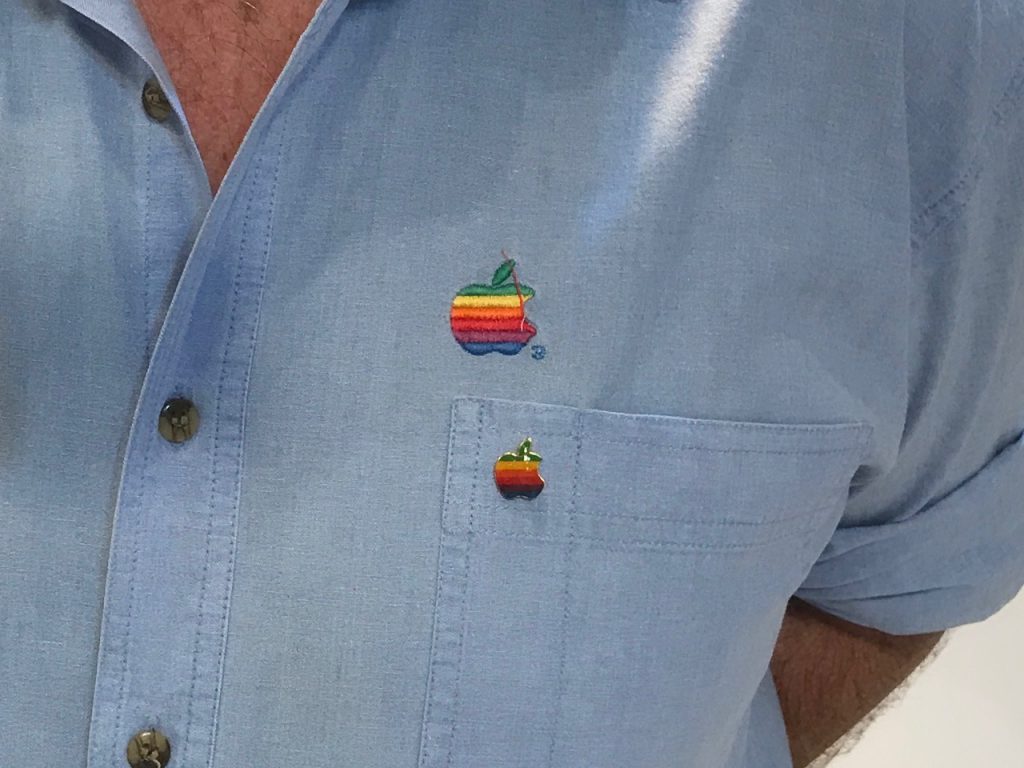
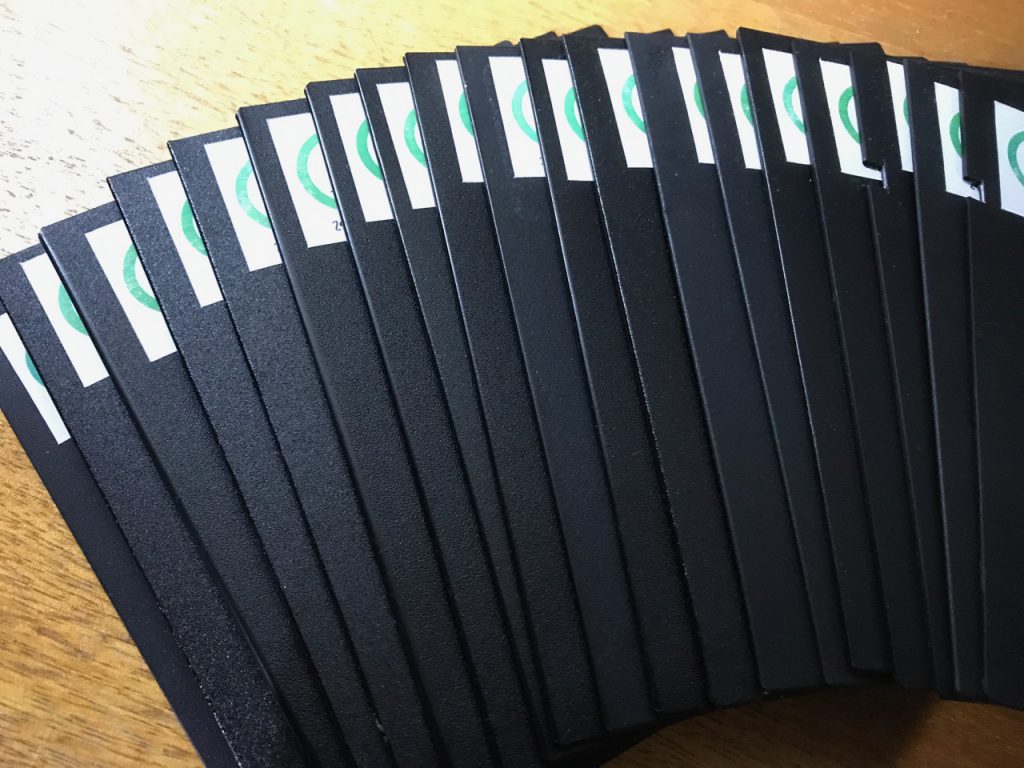
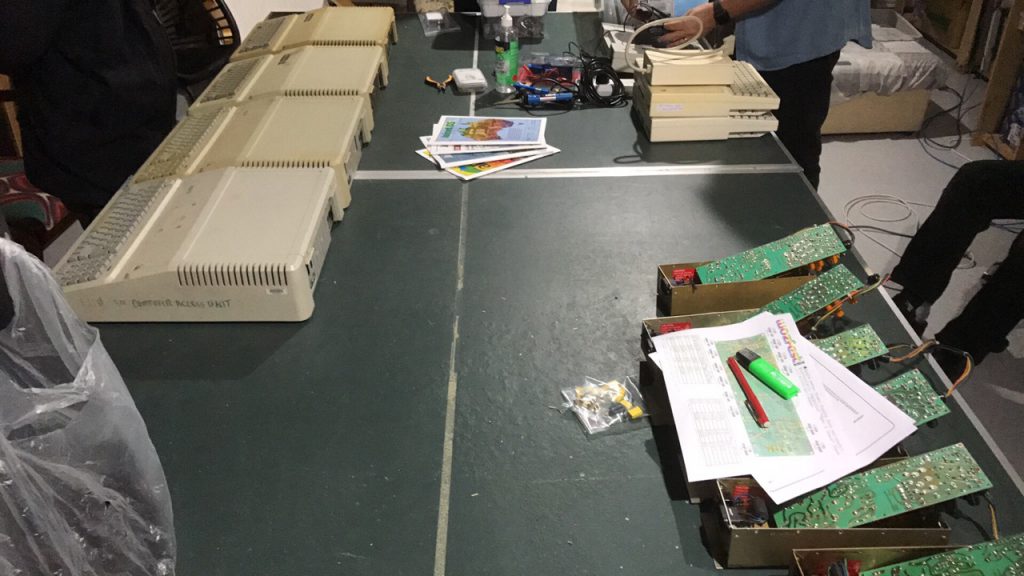
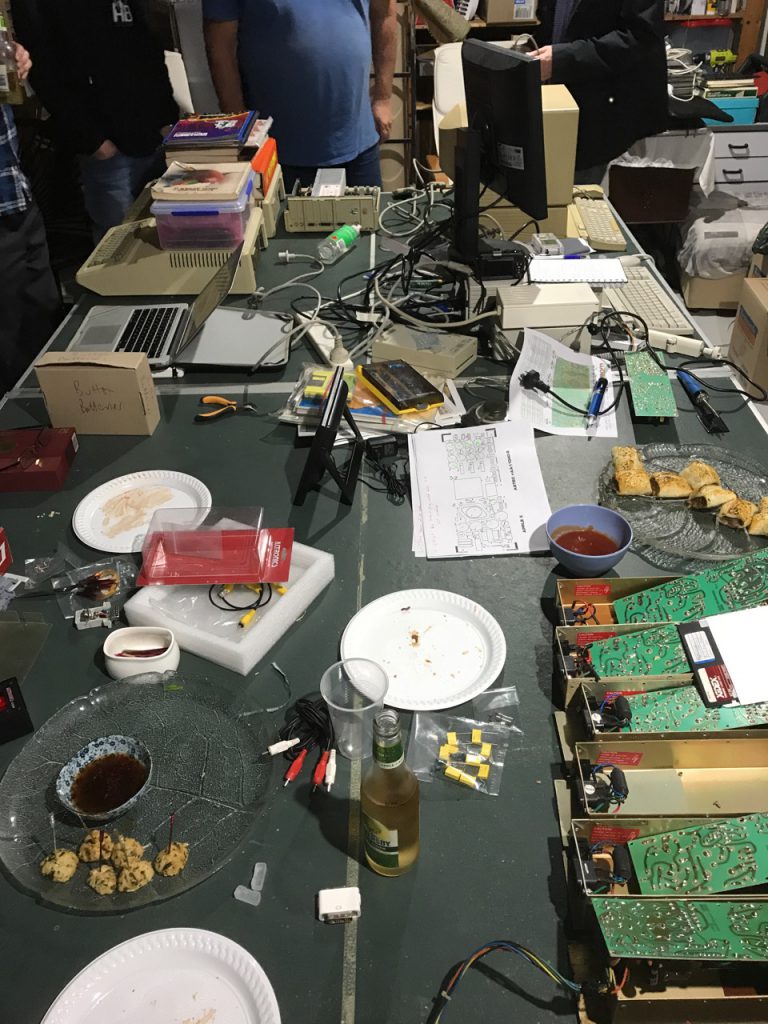
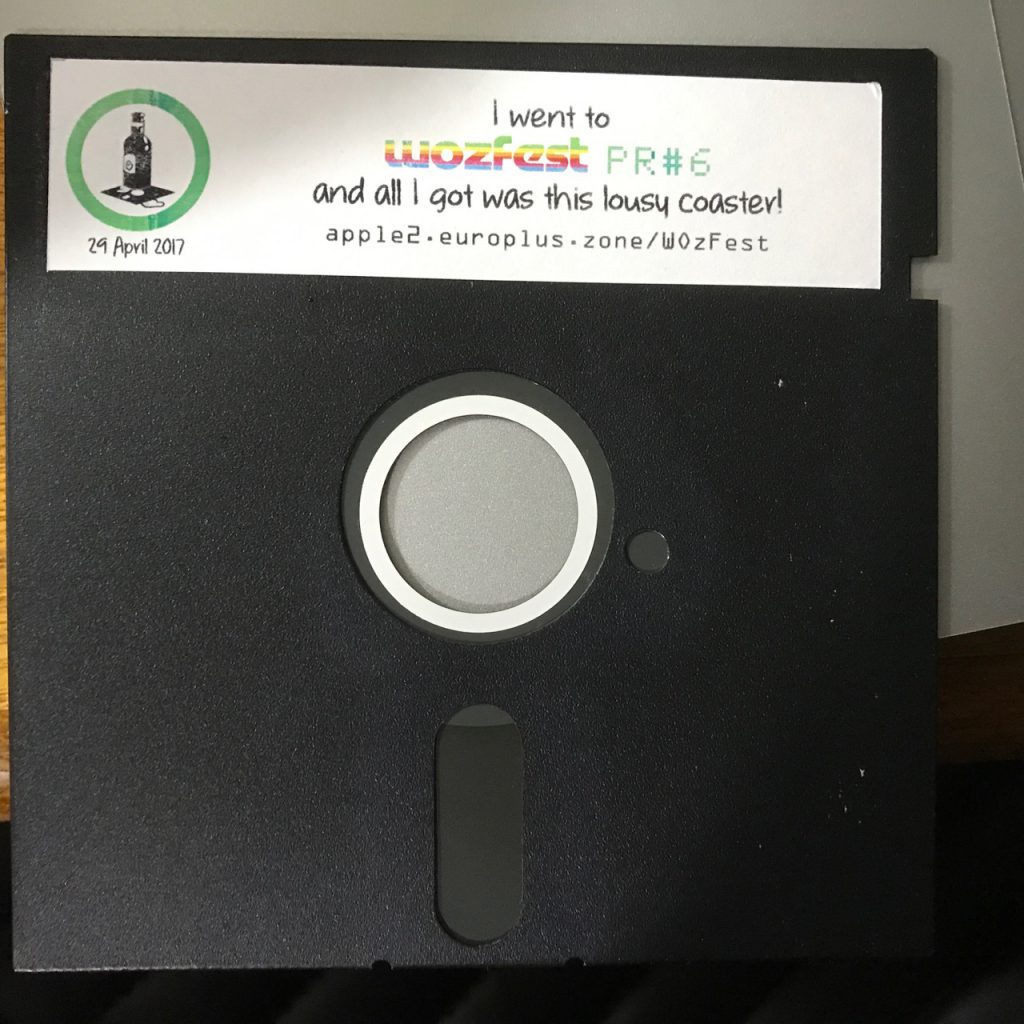
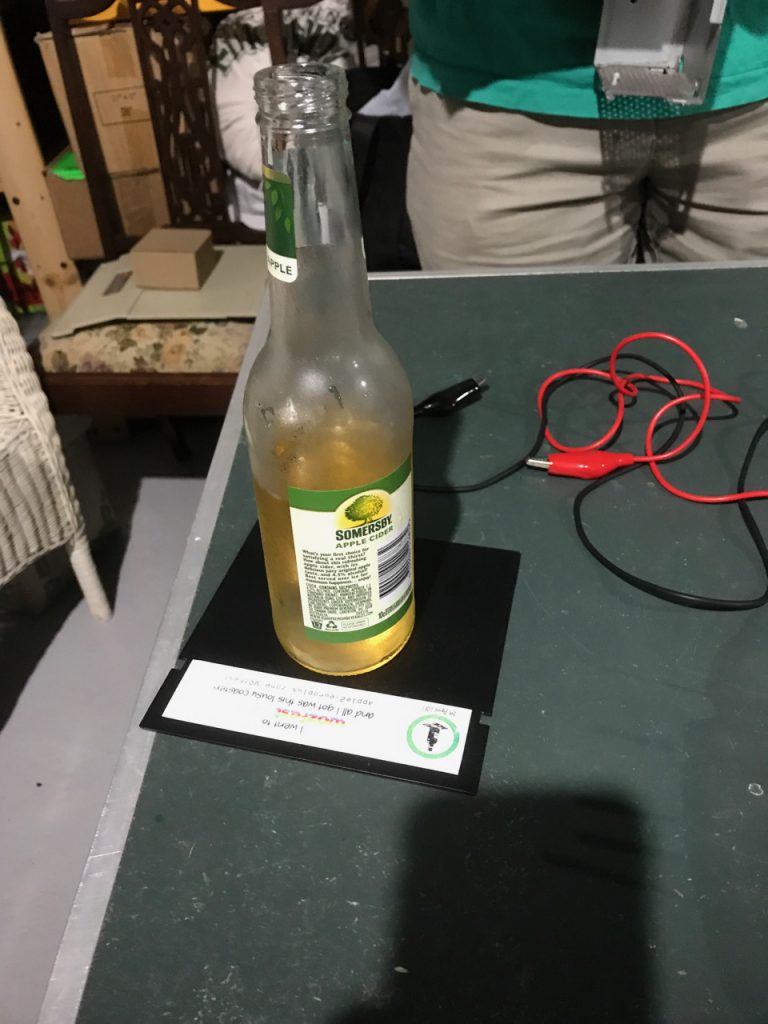
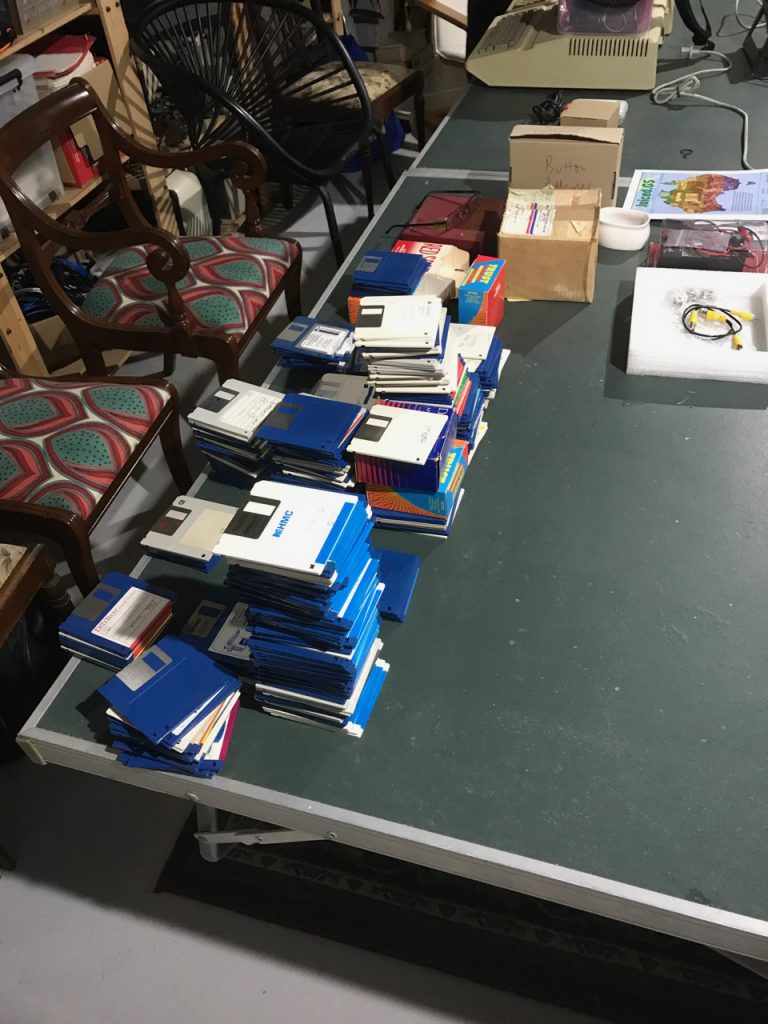
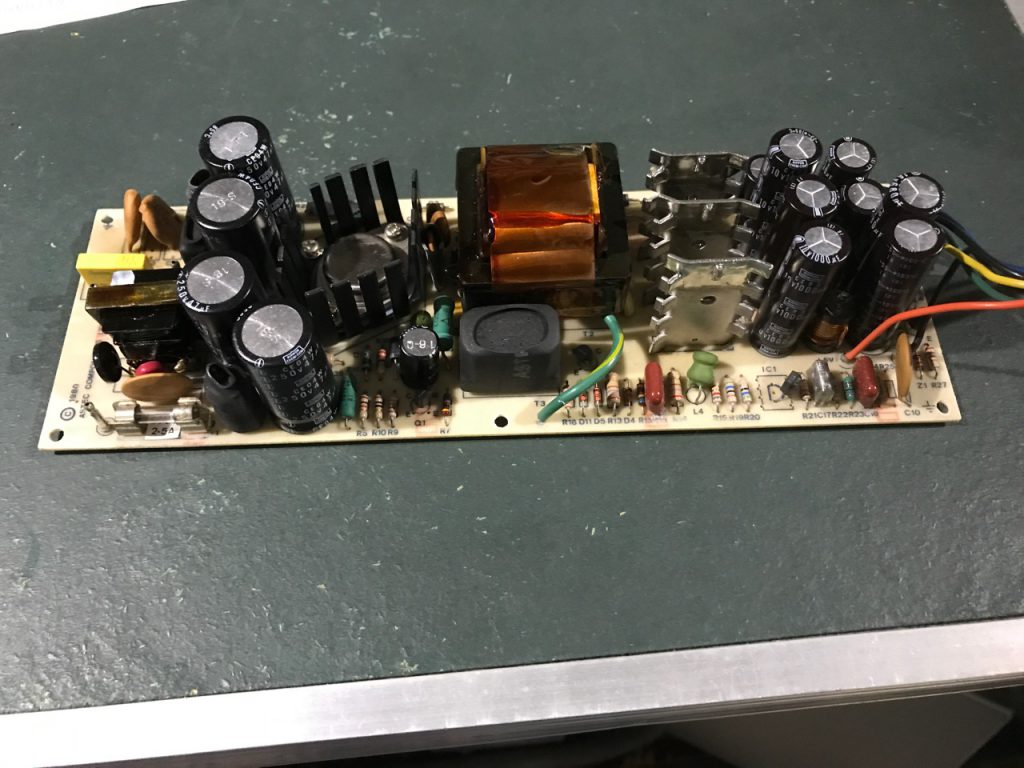
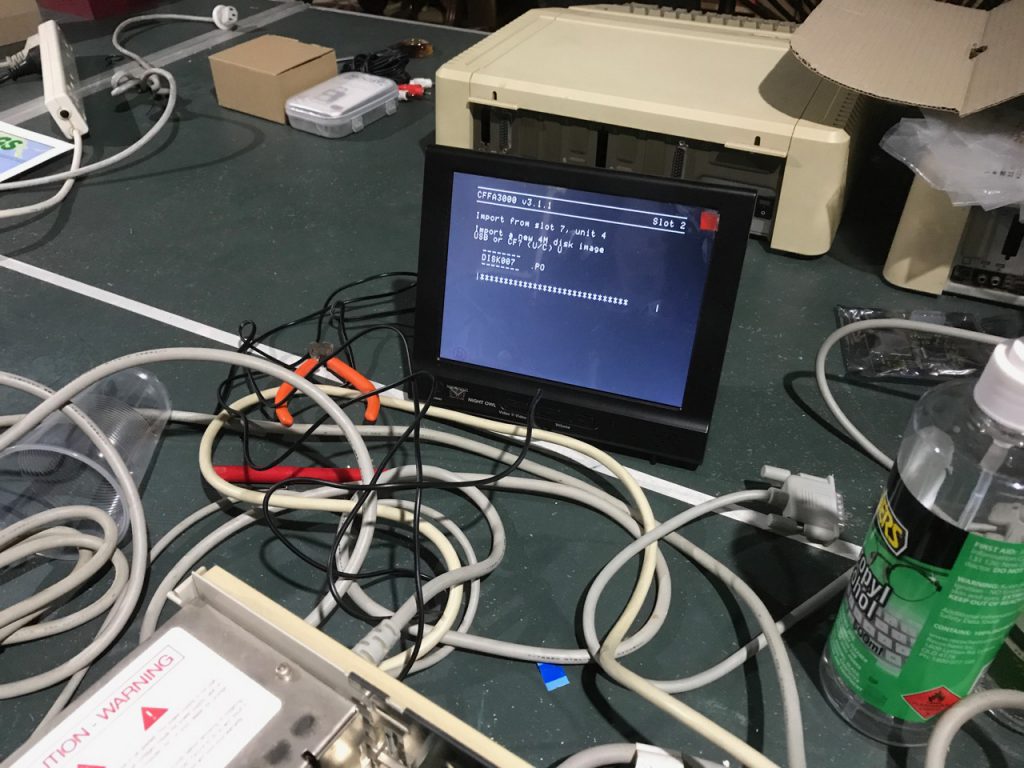
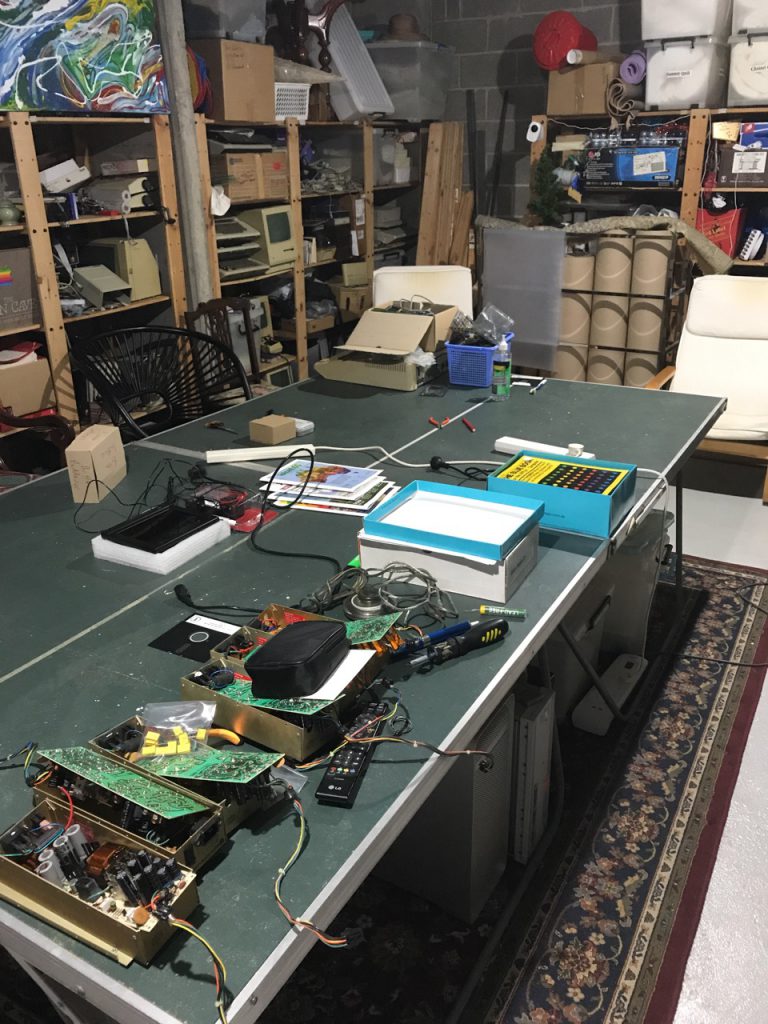
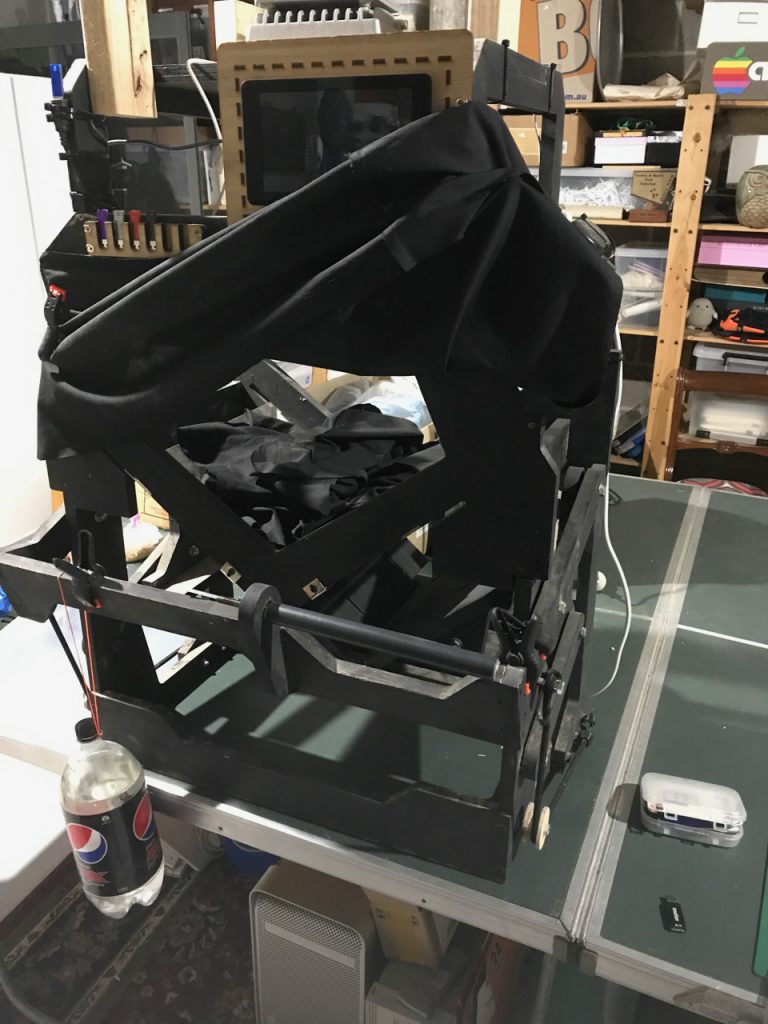
You must be logged in to post a comment.